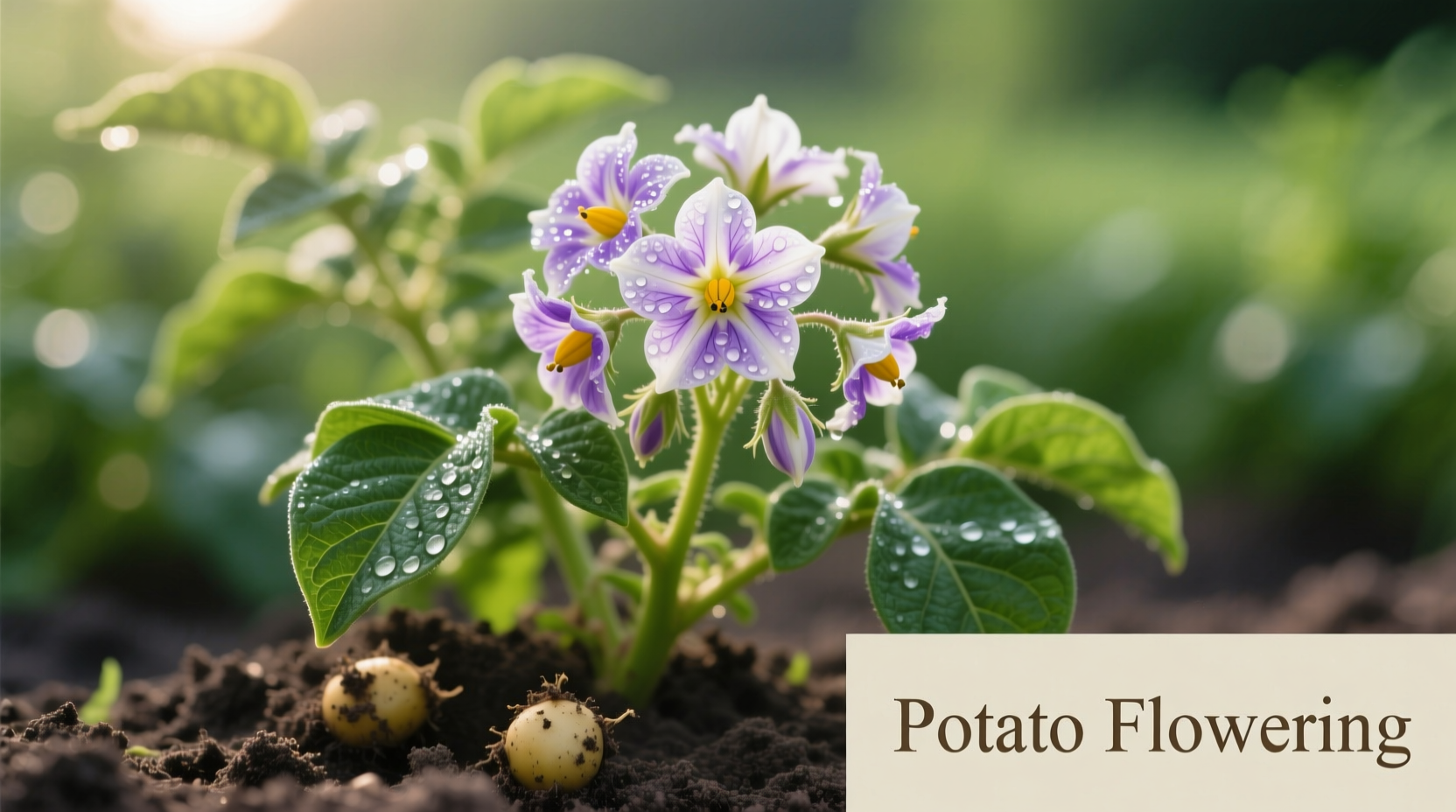Healthy potato plants typically begin flowering 45-60 days after planting, signaling the start of tuber bulking. This natural process indicates your potatoes are developing underground, though flowering isn't required for successful harvests. Most varieties produce white, pink, or purple flowers, but some heritage types rarely flower at all.
What Potato Flowering Actually Means for Your Crop
When you spot those first delicate blossoms on your potato plants, it's nature's signal that tuber development has entered a critical phase. Contrary to popular belief, potato flowers aren't directly responsible for producing the edible tubers we harvest—they're simply a byproduct of the plant's reproductive cycle. The real action happens underground where stolons transform into those familiar spuds.
Understanding this biological process helps gardeners make informed decisions about plant care during this crucial growth stage. Many novice growers mistakenly believe flowering directly correlates with yield, but research from Oregon State University Extension shows tuber formation begins before visible flowers appear.
| Potato Variety Type | Typical Flowering Time | Flower Color | Flowering Reliability |
|---|---|---|---|
| Early Season (e.g., Yukon Gold) | 45-55 days after planting | White or pale yellow | Consistent |
| Mid-Season (e.g., Kennebec) | 55-65 days after planting | Pink or lavender | Very consistent |
| Late Season (e.g., Russet Burbank) | 65-75 days after planting | White with purple accents | Moderate |
| Heirloom/Andean Varieties | Variable (60-90 days) | Vibrant purples, reds | Inconsistent |
Flowering Timeline: From Bud to Bloom to Bulb
Tracking your potato plants through their flowering journey provides valuable insights for optimal harvest timing:
- Days 40-50: First flower buds appear at leaf axils
- Days 50-60: Peak flowering with multiple blossoms per plant
- Days 60-70: Flower drop begins as tubers enter rapid bulking phase
- Days 70-90: Foliage yellowing signals approaching maturity
This progression, documented in agricultural studies by the USDA Agricultural Research Service, demonstrates that maximum tuber growth occurs after flowering peaks—not during the bloom itself. The flowers serve as a useful visual marker that your potatoes are entering their most critical growth phase.

Should You Pinch Off Potato Flowers?
Gardeners often debate whether removing flowers boosts yield. Current research from University of Minnesota Extension indicates minimal yield difference between plants with flowers removed versus those left intact. The energy saved by preventing seed production represents less than 5% of the plant's total resources.
However, there are specific situations where flower removal makes sense:
- When growing potatoes for seed production (remove flowers to prevent cross-pollination)
- During extreme drought conditions to reduce plant stress
- With varieties known for excessive flowering that shades developing tubers
When Potato Flowering Signals Trouble
While flowering generally indicates healthy growth, certain patterns warrant attention. Early flowering (before 40 days) often signals plant stress from:
- Over-fertilization with nitrogen
- Water stress (both over- and under-watering)
- Pest infestations like aphids or mites
Conversely, the complete absence of flowers in varieties known to bloom could indicate:
- Insufficient sunlight (potatoes need 6+ hours of direct sun)
- Nutrient deficiencies, particularly phosphorus
- Cool temperatures delaying development
According to Cornell University's College of Agriculture and Life Sciences, approximately 15% of potato varieties naturally produce few or no flowers, including popular types like 'Russet Norkotah'—so lack of blooms doesn't necessarily indicate problems.
What Happens After Flowering?
The period following flowering represents the most crucial phase for tuber development. As blossoms fade, the plant redirects energy toward:
- Expanding existing tubers (cell division and enlargement)
- Developing skin thickness for better storage
- Accumulating starch reserves
Maintain consistent watering during this stage—fluctuations can cause hollow heart or cracking. Stop fertilizing once flowering begins to prevent excessive vine growth at the expense of tubers. The Penn State Extension recommends reducing water slightly 2 weeks before harvest to help tubers mature properly.
Harvest Timing Based on Flowering
While flowering provides a useful reference point, the most reliable harvest indicators include:
- Foliage yellowing and dying back naturally
- Tuber skin that doesn't easily rub off
- Reaching the variety's expected days to maturity
For new potatoes, harvest 2-3 weeks after flowering when tubers are marble-sized. Maincrop potatoes should remain in the ground for 2-3 weeks after foliage dies back for optimal storage quality.
Common Flowering Questions Answered
Do all potato varieties flower?
No, not all potato varieties produce visible flowers. While most modern cultivars flower reliably, certain russet types like 'Russet Norkotah' rarely bloom. Heritage varieties from the Andes may produce abundant flowers, while some specialty potatoes have been bred specifically for ornamental blossoms.
Can I eat potato flowers?
Potato flowers contain solanine and other glycoalkaloids that can be toxic in large quantities. While accidental consumption of a few flowers won't harm you, they're not considered edible and shouldn't be intentionally eaten. The leaves and stems also contain these compounds, which is why we only consume the tubers.
Why are my potato plants flowering early?
Early flowering (before 40 days) typically indicates plant stress. Common causes include excessive nitrogen fertilizer, water stress, pest infestations, or unusually warm temperatures. While not necessarily harmful, it may signal that your plants are diverting energy to reproduction rather than tuber development.
Do potato flowers turn into potatoes?
No, potato flowers do not develop into the edible tubers we harvest. The flowers may produce small green fruits resembling cherry tomatoes (called 'potato berries'), but these contain seeds and are not the tubers we eat. The actual potatoes develop from modified underground stems called stolons, completely separate from the flowering process.
Should I be concerned if my potato plants aren't flowering?
Not necessarily. Many popular potato varieties like 'Russet Burbank' and 'Yukon Gold' may produce few or no flowers while still yielding excellent crops. Lack of flowers only becomes concerning if accompanied by poor vine growth, yellowing leaves, or other signs of distress. Check your specific variety's characteristics before assuming something's wrong.











 浙公网安备
33010002000092号
浙公网安备
33010002000092号 浙B2-20120091-4
浙B2-20120091-4